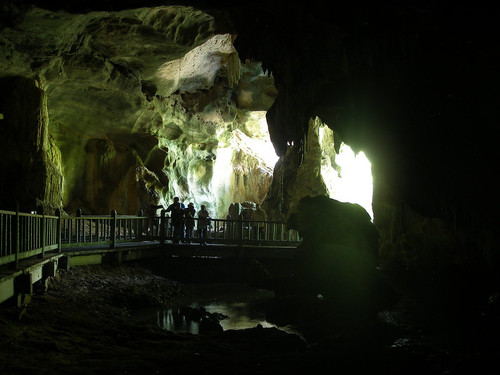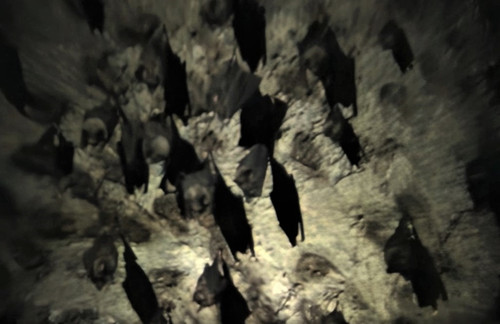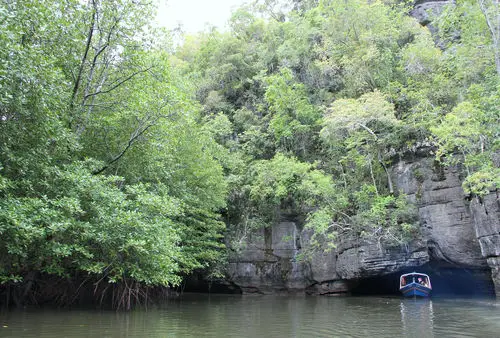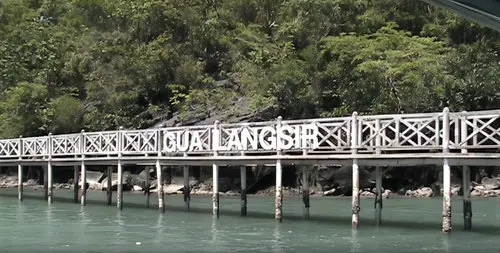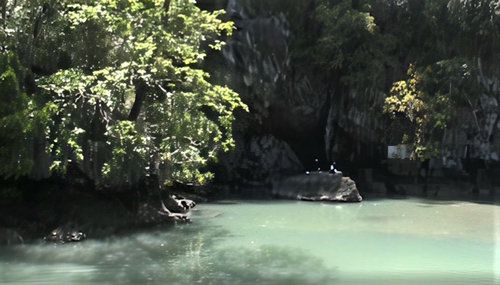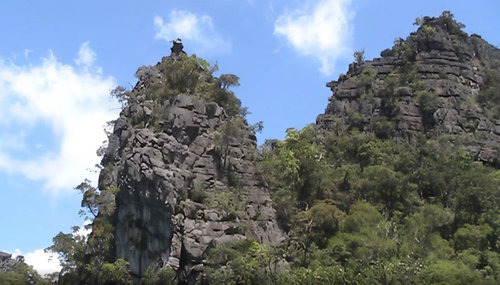Caves in Langkawi
There are abundance of caves in Langkawi and some of them are stunning ones. If you are a cave lover, then this island has some pleasant surprises for you. The caves here are part of the unique geological formations that was considered while according the World Heritage Geopark status to Langkawi by UNESCO.
Not much is known about many of the caves in Langkawi. Many of these strange geological formations were created millions of years back. Some are located in very steep limestone cliffs & rainforests and difficult to explore. However, several of them are accessible.
Some can be accessed on foot. Some require a boat and you may be able to pass through them on water and watch the awesome limestone formations on the ceilings hanging over your head.
Photo: Khairil Yusof, flickr, cc by 2.0
In one of the caves you will find Stalactites and Stalagmites have joined to form a single large column or even shapes of some living creatures. In one which is named after bats, you can see large number of fruit bats having made home there and hanging from the ceiling.
Every time as we go back to Langkawi, we keep exploring a new cave and the excitement only grows with every new finding. Recently we saw the plant known as "Living Fossil" on a cave complex. This plant species was supposed to be living even 400 million years back.
Note that in Malay, the word 'Gua' stands for a cave. Here are the great caves in Langkawi:
The Bat cave is located on the bank of Kilim river and inside a limestone cliff. It's a home to a large number of Malaysian Fruit Bats that hang from the ceiling. The cave also has spectacular limestone formations some of which resemble living creatures.
Bats hanging from the ceiling at Bat Cave
The pontoon bridge in the cave area also offers a walk through the mangrove swamps. The cave is part of the Kilim Geopark and can be accessed by boat from Kilim Jetty or Tanjung Rhu river jetty.
Crocodile Cave - Gua Buaya
This is another amazing cave which you can explore during a boat tour of
Kilim Geopark. It is so named because once the cave area used be natural habitats of crocodiles. But no longer so and it's safe to explore it now. The Kilim river passes right through the cave. During low tide a boat can also pass through it and you can see the great limestone formations on the ceiling. There is not must stalactites or stalagmites here though. The lower ceilings of the cave is roosting place for many fruit bats.
A boat looking into the Crocodile Cave, Langkawi
Photo: Ahmad Naufal, flickr, cc by 2.0
Porcupine Cave - Gua Landak
This cave is probably one of the most visited ones because it is part of many standard packaged tours of the island and is located centrally close to Kuah Town. It's only a few minutes drive from the town. From the road you will need to walk down to the cave through a rocky downward pathway full of boulders & rocks.
The arched entrance to the cave is located about 20-meters below the road level. The cave is so named because they say that sometime porcupines can be seen here.
But inside you will see lots of great stalactite and stalagmite formations and also some bats. Some formations resemble the shape of an umbrella. A huge stalagmite pillar stands like a sentry. But the best of all is the floating formation that looks like a hanging garden.
Gua Langsir - Cave of Banshee
This cave can be reached easily by boat from Kuah ... takes about 15 minutes boat ride. One can also visit the cave by taking a boat from the Kilim Jetty. There is a long footbridge that goes over the water to get to the cave area. Along the way you will see many small hidden lakes full of mangroves.
Footbridge to Gua Langsir
The Langsir cave is in fact hidden by dense mangrove roots. So, regular tourists can not access the cave and get inside it. There are lagoon formations in the area and it's home to large mangrove population. There are hardly any stalactite or stalagmite formations inside the cave.
Langsir Cave is considered as a dreaded cave by the locals. The local superstition is that the cave is home to a Banshee (a female spirit) who sucks the blood of human body. This myth has been formed probably because of the shrill and eerie sound that comes out of the depth of the cave. This is caused by the wind that comes out through the hole of the upper chamber. The cave is home to large number of resident bats.
Gua Langsir hidden by mangrove roots
The cave area has the tallest limestone rock formations which are 480 million years old. While climbing the rocks may look doable from the water, it is meant for experienced rock climbers only. The climb to the cave is difficult and should not be tried by the inexperienced. It requires skill and complete physical fitness.
Tallest rocks near Gua Langsir
Gua Dangli
You will need to take a boat from
Tanjung Rhu Beach area and visit this cave which is located at an offshore island called Pulau Dangli. It takes about 30 minutes by boat and you can enter the cave only during low tide. There are actually two caves here with the same name and are distinctly different.
As you enter the first cave you will see amazing stalactite & limestone formations like that of an umbrella, mushrooms and many other structures. You will then need to pass through a narrow whole (about 3 meters wide) and then reach a bamboo forest area. From here about 30 meters up the slope is the second cave. It has a depth of about 20 meters and also has excellent formations.
This double decker cave located offshore in the northern waters of Langkawi is steeped with legends. It is highly popular with tourists and has many strange limestone formations.
Gua Pasir Dagang
This cave is located in the southern water area of the main island of Langkawi. You will need to take a boat ride (preferably from Awana Porto Malai Terminal in Pantai Tengah) and reach the coastline and Merchant Beach area of the island
Pulau Dayang Bunting. This 100 meters long cave is located here.
You will be intrigued with the strange formations of the stalagmites. The cave has large limestone walls. A stream flows through it. To enter the cave, you will need to wade through waist-deep water. Inside the airconditioning feel is due to the cold wind that continuously flows through the tunnel.
Gua Pinang or Gua Badak
This cave is located off a water stream at Kuala Kubang Badak and north of the main Langkawi island. You can reach there by taking a boat ride from Tanjung Rhu Jetty area. Once there, you will need to climb for about 20 minutes through hard and thorny vegetation to reach the cave. It is estimated that the cave and the surrounding area was under the sea thousands of years ago. It is indicated by the many sea shells on the walls of the cave. The entrance is small and by the side of a huge limestone outcrop.
A passage leads down to the chambers below. The passage gets narrower and darker as you climb down the stairs. And inside there are thousands of bats (known as Asian roundleaf bats) hanging from the ceiling and flying around as you can see them in flash lights. It is estimated that the Gua Pinang has close to 10,000 bats which is more than any other caves in Langkawi.
You can see huge formations of stalactites and stalagmites in the cave as well as many different types of insects, lichens etc. It takes about 20 minutes before you can see sunlight again as you come out from another side, but it takes much longer to explore the whole cave. An estimate says that Gua Pinang is about three times the size of Gua Kelawar (Bat Cave), but still due to difficult access, it's hardly visited by tourists.
Gua Tok Sabung
This cave is located close to Gua Pinang and just opposite to the island Pulau Jemurok. There are two approaches to the cave. The more difficult route is from the shoreline that requires a steep climb for about 40 minutes. Another route is through a marble quarry that reaches the floor of the limestone outcrops. Inside the cave, the stalactite and stalagmite formations are breathtaking and touted as some of the best in the island. The cave is also home to thousands of bats.
Update: Gua Tok Sabung was destroyed by Lafarge Cement company to use the place for cement production.
Related Articles
|
Visitors' Reviews/Comments
Share your experience.
|
